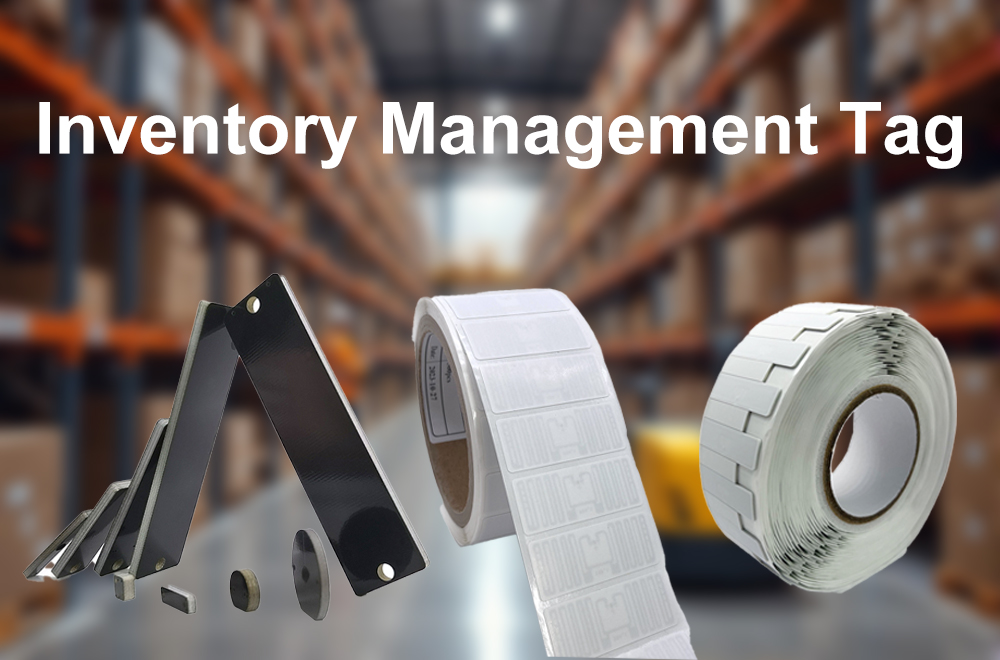Ultra High Frequency (UHF) RFID technology is transforming the way organizations track and manage inventory, offering a range of benefits that streamline operations and improve overall efficiency. In this article, we will explore how UHF RFID can facilitate inventory management, reduce costs and enhance the customer experience.
UHF RFID technology allows businesses to track products in real time, providing an up-to-the-minute view of inventory across warehouses, stores, or even throughout the entire supply chain. UHF RFID tags are attached to products, enabling them to be automatically identified and tracked as they move through various stages of the supply chain.
Unlike traditional barcode scanning, UHF RFID doesn’t require line-of-sight, which means multiple items can be scanned simultaneously without any manual intervention. This reduces the time spent on manual stocktaking, ensuring that inventory records are always accurate and up to date. With real-time updates, businesses can make more informed decisions, avoiding issues like overstocking or stockouts.
Stockouts and overstocks are two major challenges that impact retail and warehouse operations. UHF RFID helps to solve these problems by providing precise visibility of stock levels in real time. With automated alerts, businesses can easily track which items are running low and reorder them before they go out of stock.
On the other hand, UHF RFID also helps prevent overstocks by monitoring slow-moving inventory. Retailers can use this data to make smarter decisions, such as implementing promotions or markdowns to move excess stock. This not only ensures that the right products are available at the right time but also improves customer satisfaction by minimizing the risk of out-of-stock items.

Inventory accuracy is critical to efficient business operations. Traditional barcode systems often require manual scanning, which can lead to errors, especially when handling large volumes of products. UHF RFID eliminates this issue by allowing businesses to scan multiple items at once, without the need for line-of-sight or manual effort.
This means that businesses can conduct faster and more accurate inventory checks, reducing the likelihood of discrepancies. With UHF RFID, inventory data is instantly updated in the system, providing an accurate picture of stock levels. As a result, businesses can optimize restocking strategies, forecast demand more accurately, and ultimately improve their inventory turnover rates.
UHF RFID also plays a key role in streamlining the supply chain. The technology speeds up the goods receipt and dispatch processes, allowing businesses to efficiently track the movement of products from suppliers to distribution centers and ultimately to customers.
When goods arrive at a distribution center, UHF RFID readers can automatically scan them, reducing the need for manual checks and significantly speeding up the process. Similarly, during dispatch, UHF RFID ensures that products are swiftly and accurately read and verified for shipment, reducing delays and improving order fulfillment times.
UHF RFID also improves collaboration between retailers and suppliers by providing transparent, real-time data. Suppliers can access inventory levels and sales data, which allows them to manage production schedules more effectively and avoid supply chain disruptions.
Shrinkage, which results from theft, fraud, or administrative errors, is a significant issue for many businesses. UHF RFID technology helps reduce shrinkage by offering enhanced visibility and control over inventory. Each product's movement is tracked from the point of manufacturing to the point of sale, making it easier to identify and address losses as they occur.
The ability to track inventory in real time also helps pinpoint areas where shrinkage is most likely, allowing businesses to take corrective actions. This comprehensive tracking not only helps reduce theft but also prevents administrative errors that can lead to inventory discrepancies.
UHF RFID technology enhances the customer experience by speeding up the checkout process and ensuring that products are available when needed. With RFID, retailers can scan multiple items at once, reducing wait times and making the shopping experience more convenient for customers.
In addition, RFID technology allows businesses to offer personalized shopping experiences. By tracking customer behavior and purchase history, businesses can tailor promotions and product recommendations based on individual preferences. This personalized approach helps build customer loyalty and encourages repeat business.
While the initial investment in UHF RFID technology may seem significant, the long-term benefits are substantial. By automating inventory management and reducing human errors, UHF RFID helps businesses cut labor costs. Tasks that once required manual intervention, such as stocktaking and order processing, can now be handled automatically, freeing up staff to focus on more strategic activities.
Moreover, the accuracy provided by UHF RFID leads to better inventory management, which helps businesses optimize stock levels, reduce waste, and improve cash flow. The result is improved profitability and a higher return on investment (ROI) in the long run.
UHF RFID technology is transforming inventory management and supply chain operations by providing real-time visibility, reducing errors, and improving efficiency. By enabling faster product tracking, reducing stockouts and overstocks, and streamlining logistics, UHF RFID helps businesses stay competitive in an increasingly fast-paced market.
Investing in UHF RFID is not just about improving operational efficiency; it’s also about enhancing customer satisfaction, reducing costs, and driving financial gains. As the technology continues to evolve, businesses that adopt UHF RFID will be better positioned to meet the demands of today’s dynamic retail and supply chain environments.
Do you need a professional team to provide you with solutions? Contact us for a quote
Let us discuss it with you.